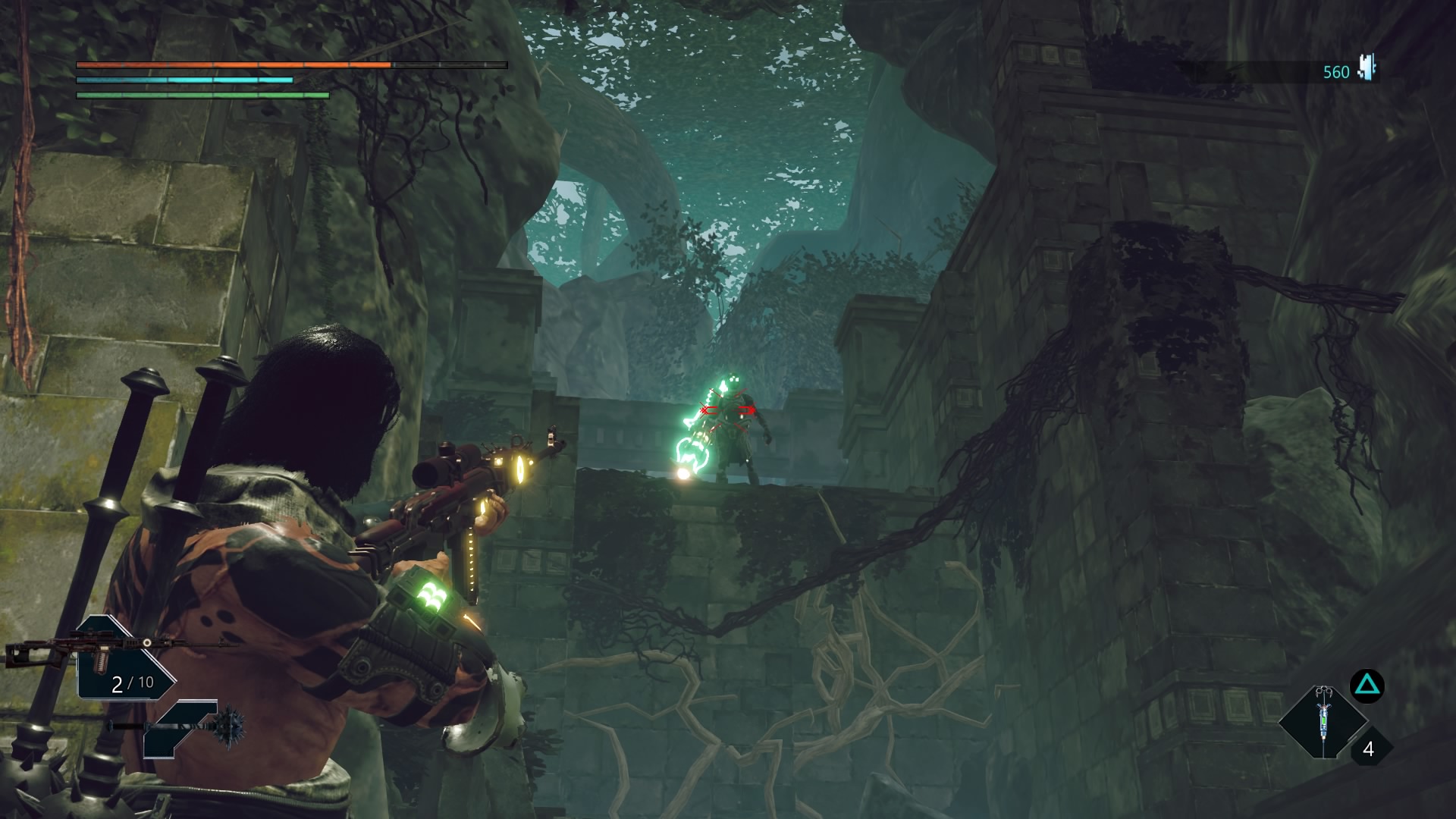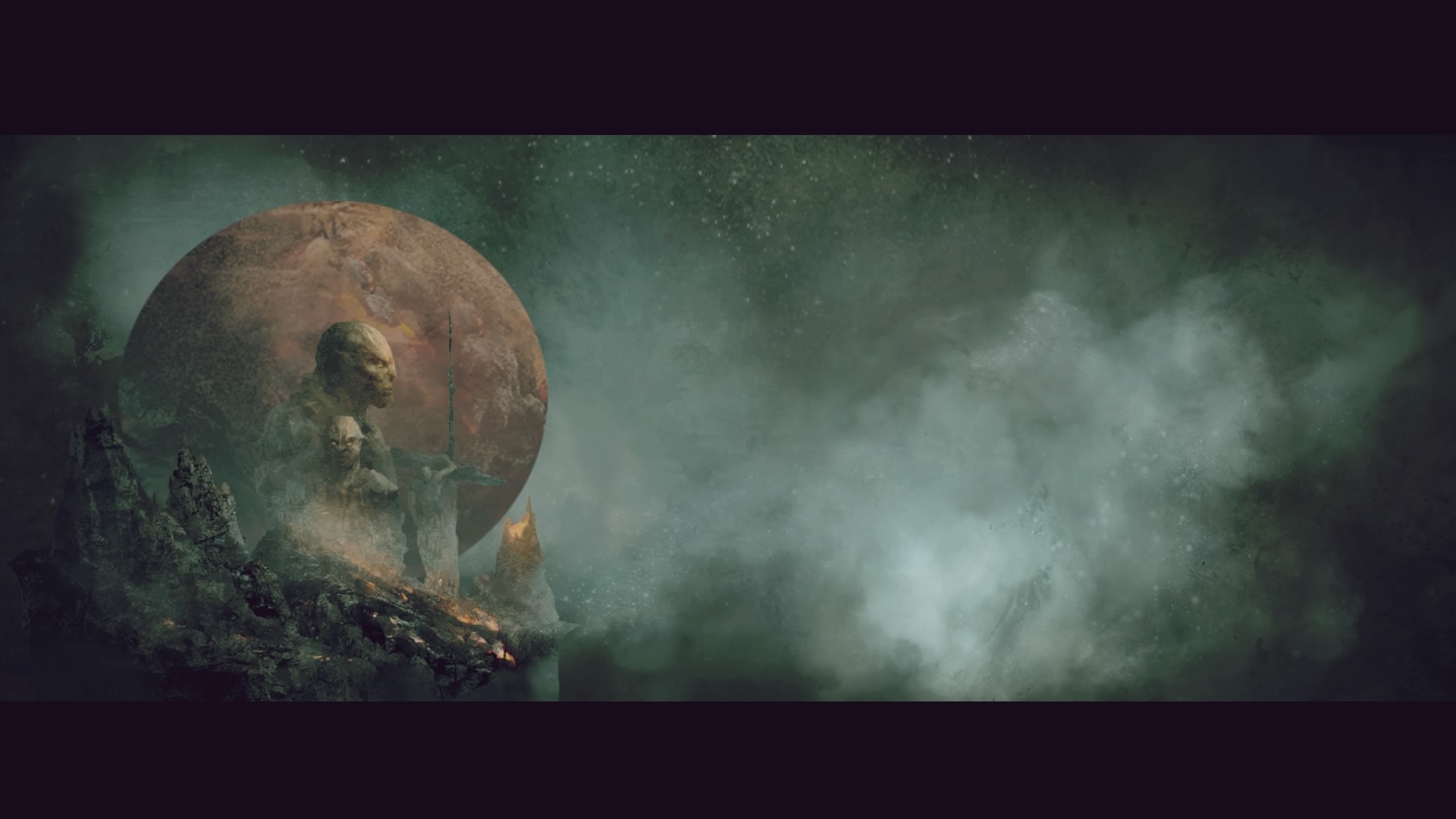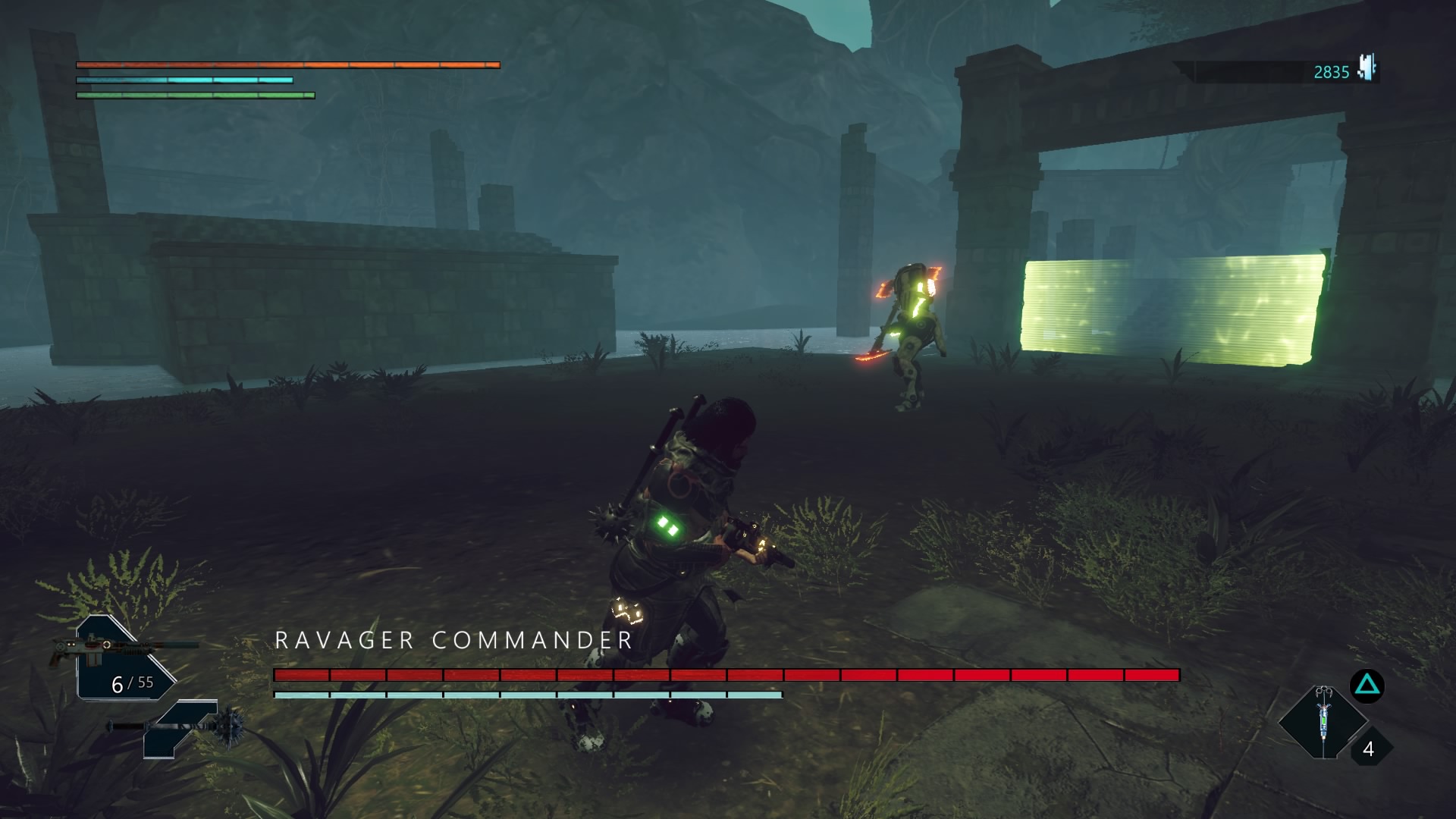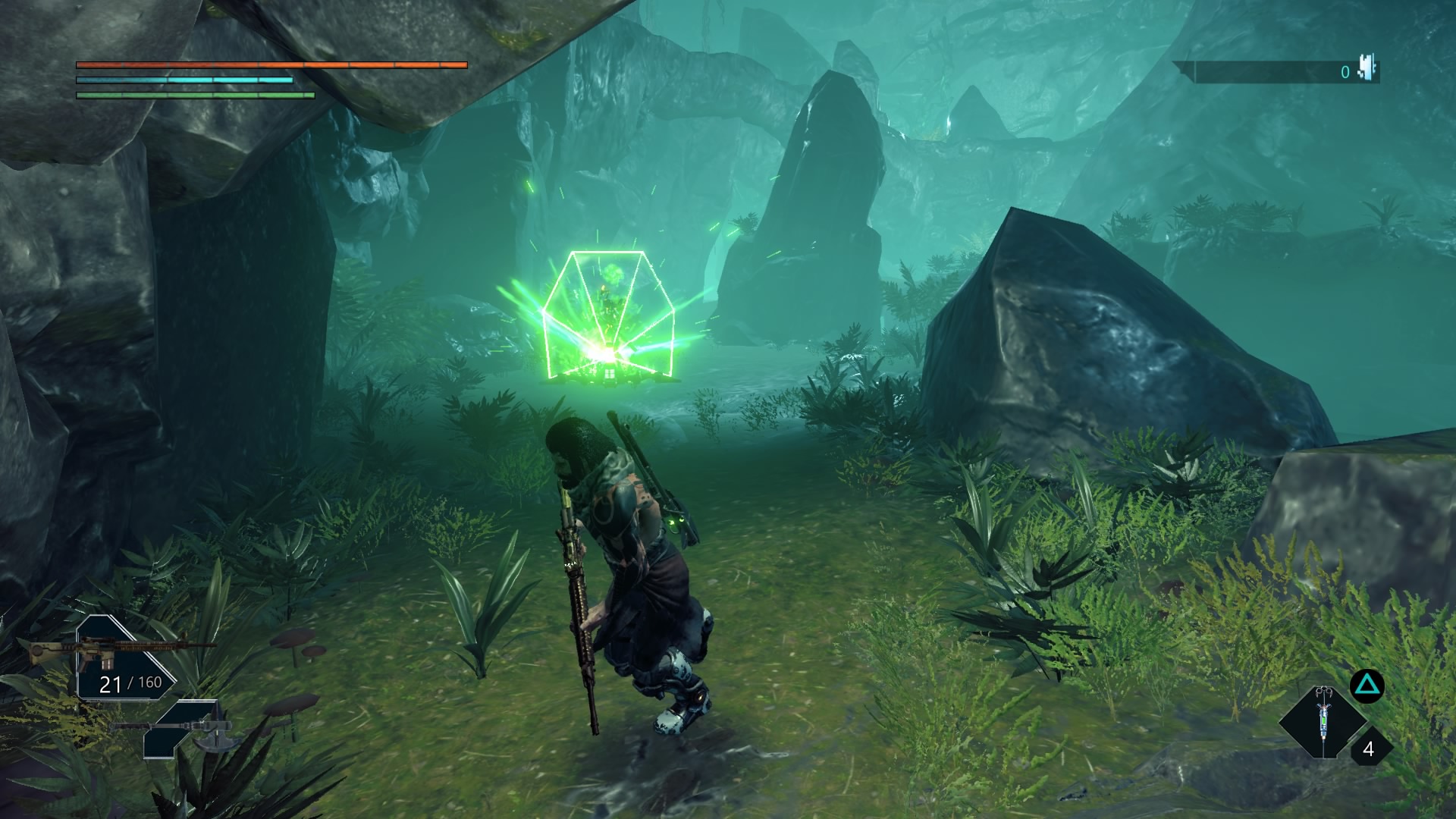Platforms:
Xbox One, PS4, PC
Released:
September 7, 2018
Publisher:
Toadman Interactive
Developer:
Toadman Interactive
The design of Dark Souls has been highly influential on many games that have been developed in recent years. Immortal: Unchained, the first original title developed by Swedish developer Toadman Interactive, has used Dark Souls’ basic structure with added guns and a cyberpunk aesthetic. There are many unique aspects to this game that makes it more than a simple Dark Souls homage. However, my time with the game would suggest that, whilst there are some interesting ideas in Immortal: Unchained, perhaps the developers bit off a bit more than they could handle.
Like From Software’s series, it’s a third person action-adventure title about stamina and resource management. It’s also rather difficult, with regular enemies able to shoot you down in one or two attacks. Players can rest and apply upgrade points called Bits at Obelisks. Whenever you die, you restart at one of the Obelisks, and all the enemies you killed come back as well. You lose all of your bits when you die, but can retrieve them if you find your place of death.
Where Immortal: Unchained differs from its obvious inspiration is that it plays a lot like a third person shooter. The player is given a melee weapon, but it is mostly for emergencies or for finishing off weakened enemies. Otherwise, the player has access to a variety of pistols, shotguns, assault rifles, and grenade launchers, among others, with which to dispatch the enemy horde.

It also differs in how enemies have glowing weak points on their backs and heads. Players are encouraged to strafe around and attack weak points for critical hits to save on ammo. Alternately, shooting arms and legs can make those limbs fall off, and disable the enemy. There is also a pseudo-class system, where players can equip “Aspects”, which offer stat boosts.
Like Dark Souls, the story is purposely vague and opaque. The game is set in a futuristic setting, where a mysterious evil force is reviving the dead and threatening the Monolith. The Monolith is the cornerstone of all life, and has freed you, a random prisoner, in order to protect it. After a brief tutorial, you must travel via portal to a variety of locations to take on bosses and defeat enemies. I can’t say I got much of a handle on the overall plot, but I found what tidbits of world building I received intriguing, and it fleshed out the setting.
“The setting is an intriguing mashup of cybernetic and organic aspects.”
I really enjoyed the art direction to Immortal: Unchained. The setting is an intriguing mashup of cybernetic and organic aspects.Wires hang like vines whilst plants are breaking through the metal wall panels. Also, lots of neon everywhere, in the levels, guns and character models. Even the character creation system can only slightly downplay the cyborg elements of the player character. It creates this sense of a setting torn between two extremes, and made me excited to see new areas.
Whilst I liked how the levels looked, the actual level design leaves something to be desired. Whilst each area feels visually distinct, the individual rooms inside each lack recognisable landmarks, and I kept getting disoriented. In addition, for a game that demands the player constantly be moving around to avoid getting shot, the amount of narrow ledges is ridiculous. Whilst I died a lot in this game (as is expected for a game of this genre), a high proportion of those was because I accidentally fell off a narrow ledge whilst dodging. The game also has a habit of funnelling the player through narrow corridors. This didn’t really compliment the combat, where attacking enemies from the front is virtually useless.
“The adaptation of Dark Souls’ gameplay model doesn’t entirely work when guns are prominently involved.”
The adaptation of Dark Souls’ gameplay model doesn’t entirely work when guns are prominently involved. For instance, keeping the emphasis on stamina management feels a lot less necessary when shooting doesn’t consume stamina, like regular attacks did in Dark Souls. There isn’t really a cover system, but the level design also doesn’t facilitate mobility. It also feels unfair when enemies outside my field of vision are taking potshots at me whilst I am focusing on other opponents.
The fact that even with a sniper rifle, most enemies can shoot me from further away than I can shoot them, doesn’t help. Furthermore, I can’t find a reason for the pause menu to not pause the action outside of wanting to be more like Dark Souls. This is annoying, as there are no multiplayer aspects, and thus no real justification for this mechanic.
It took a long time for me to acquire weapons that I could actually use. The vast majority of the new guns and melee weapons I acquired in the first 5 hours or so had far higher stat requirements than what I had at the time. As a result, acquiring new loot didn’t feel very satisfying, and I was stuck with my starting gear for a long time. That said, after the early game, loot drops begin to feel more balanced.
The regular enemies always felt like they had too much health compared to how easily they can kill the player. If you aren’t attacking their weak points, then engaging them becomes tedious. Enemy attacks and random traps can stun you far too easily. Getting hit even once can be fatal if it leaves you open for a killing blow.

The idea is to whittle down their visible stamina bar and stun them, allowing for an easy critical hit. This worked fine with one or two enemies at a time, but Immortal: Unchained often sends swarms of them at you. You can lock on with the analogue stick, which helps with aiming, but leaves you open when facing large groups. There are moments when the combat shines, especially after the early game when you have some decent guns. However, even later on, the gameplay and level design never felt like they complimented each other very well.
The boss fights, however, felt fairly challenging and memorable.Whilst they too required the same strategy of “roll around and shoot them in the back”, they felt enjoyably difficult. Overall, they were fairly challenging, and it was fun to learn their attack patterns and taking them down. The fact that they are done in wide open arenas that allow for lots of mobility certainly helped. In particular, I appreciated how the developers always placed Obelisks a short distance away from boss encounters. It was a small feature that made the boss fights far less of a chore.
Unfortunately, what definitely holds Immortal: Unchained back are the bugs. This is a fairly rough game in the technical department. Textures would take up to five seconds to properly pop in when I loaded a save file. The draw distance isn’t very far, so as I walked, small environmental details would spontaneously appear a few feet ahead of me. The game’s performance stutters often, and crashed multiple times. Some of the Obelisks in Viridian would crash the game if I tried to change my Aspect at them. One time I even died from falling through the floor, and I clipped into objects and enemy characters frequently.
When you can lose most of your health from a single attack, it is important that failures feel fair. However, many times, I felt like my deaths were caused by factors out of my control.With this level of difficulty, it is unfortunate that it felt so unstable. I really hope many of these technical issues are improved with future patches. On the version I played, however, it felt pretty rough.
Positive:
- Attractive and engaging art style
- Enjoyable and challenging boss fights
- Worldbuilding is subtle and mysterious
Negative:
- Still feels somewhat unpolished
- Some questionable design decisions
- Narrow level design doesn't compliment Souls-like gameplay
Ironically for a game called Unchained, some of Immortal: Unchained’s biggest problems come from feeling overly attached to its inspiration. Toadman Interactive clearly felt inspired by Dark Souls and wanted to put a fresh spin on that formula. However, there are many subtle nuances to those games that make them work, and Immortal: Unchained doesn’t quite reach that potential.
Although it often feels more frustrating than fun, and lacks a lot of technical polish, there are still things to like. Immortal: Unchained’s strong art direction and subtle world-building drew me in, and during boss fights and some gameplay sections, everything clicked into place. However, there were too many times when failure felt unfair, and the amount of bugs and technical instability wore me down. Whilst I can appreciate the developer’s ambition, it doesn’t feel like it has found an identity of its own yet. At its premium price point, it can’t quite compete with some of the others in its genre. However, if you’re willing to overlook some imperfections, there is enjoyment to be had.












